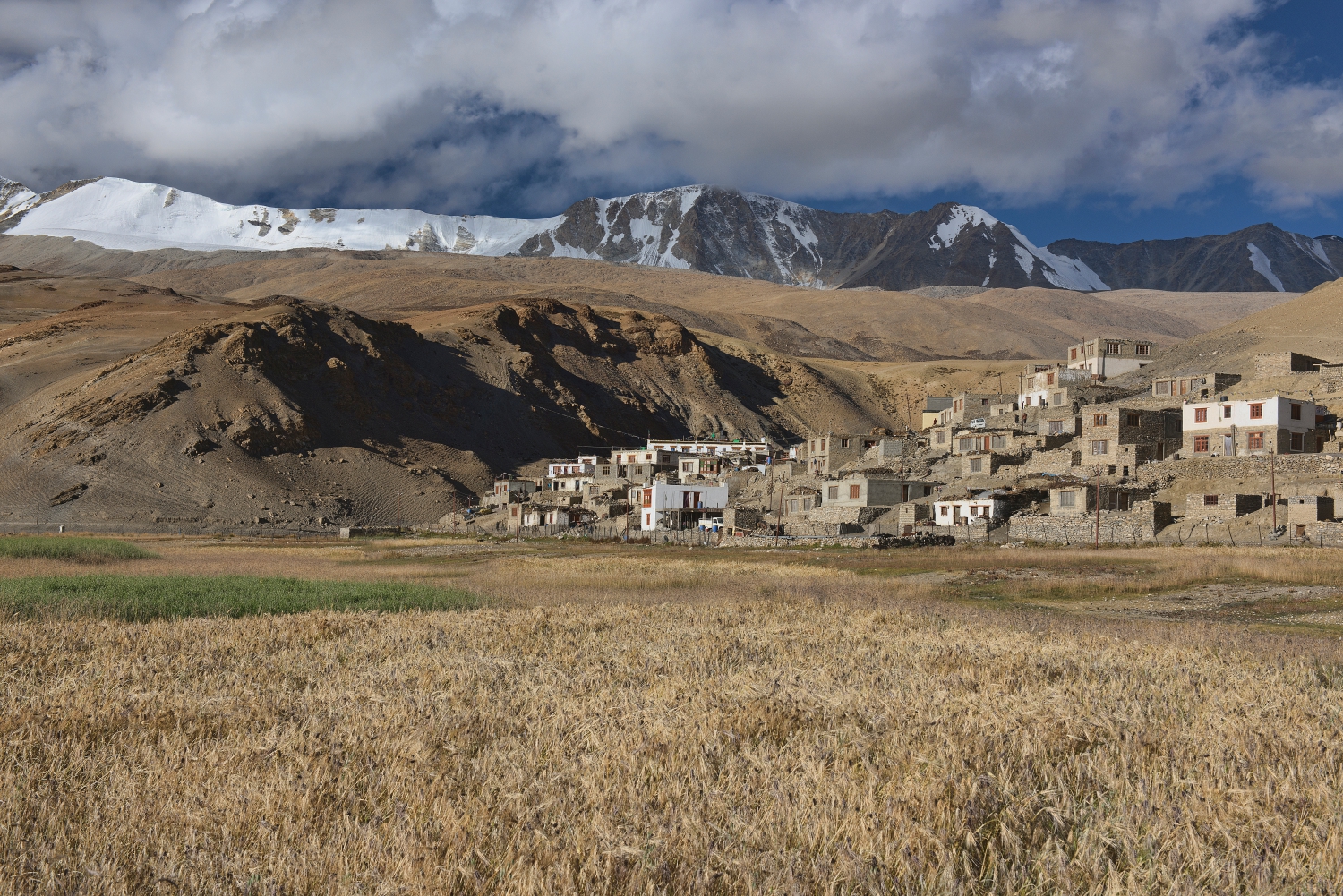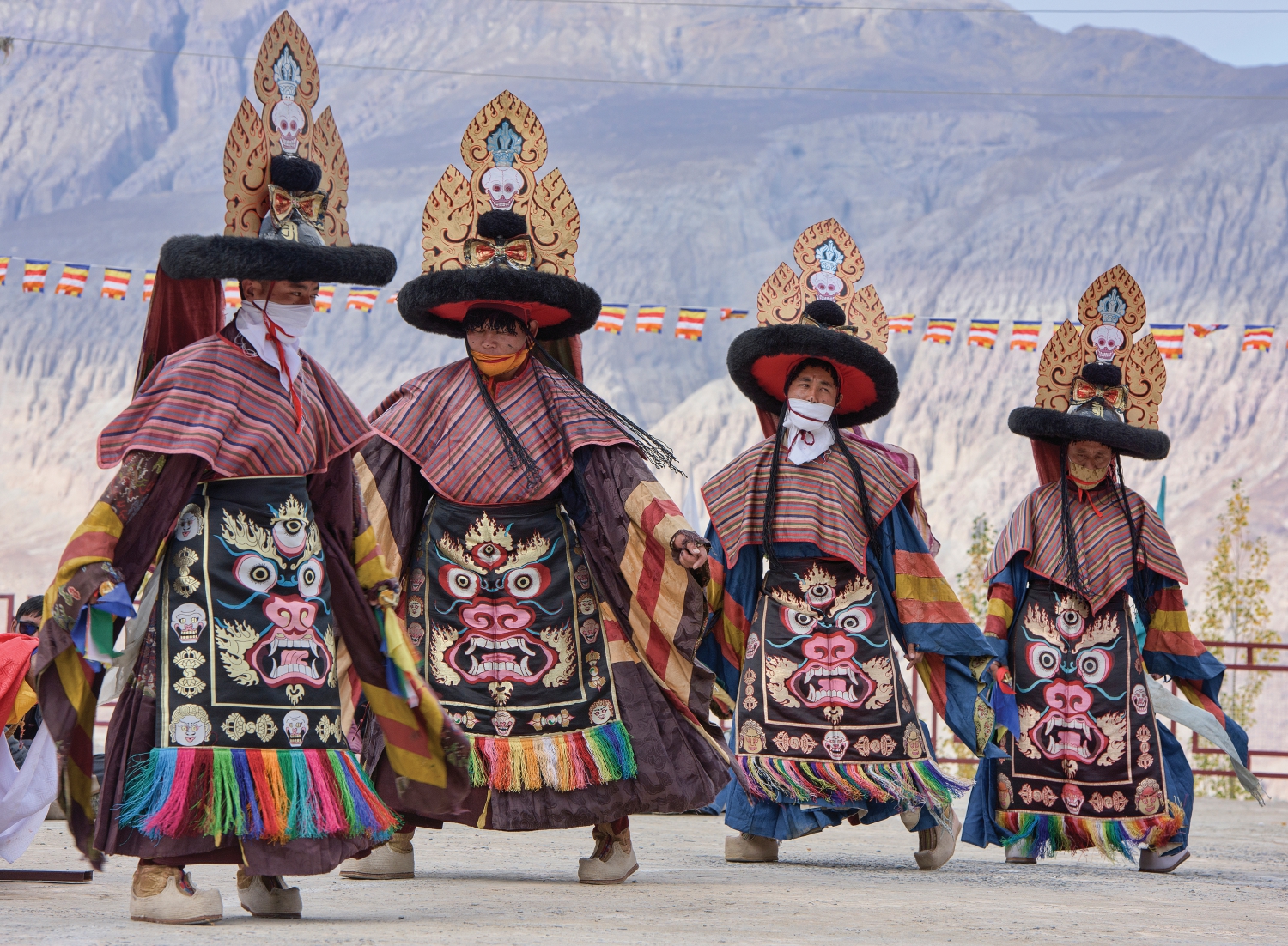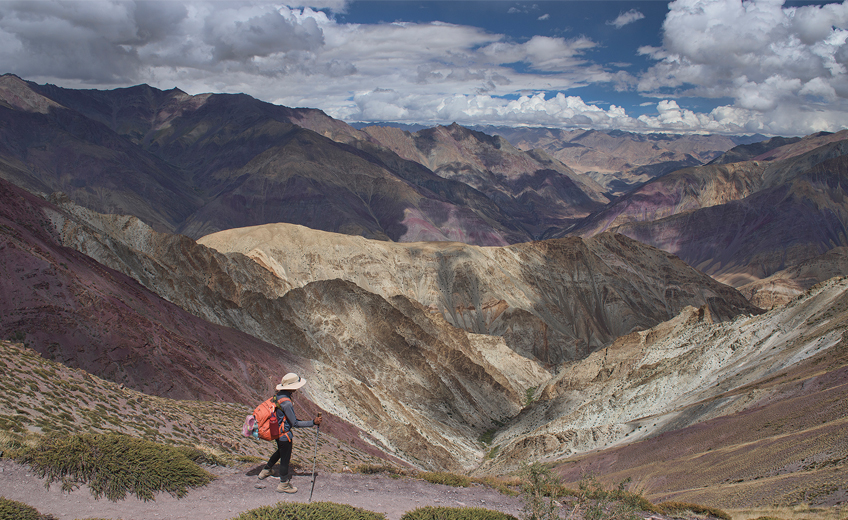My wife and I had only been in Ladakh for two weeks, yet seemed to be treated to summer, autumn and winter on a daily basis. The morning started sunny and warm, then the clouds rolled in and the temperature dropped, then all of the sudden it was snowing. The surrounding scenery suggested the same. Barren brown hills made up the first layer of an ongoing artist’s landscape. Yellowing poplar and willow trees comprised the foreground and middle of the picture, and then the top featured rugged mountains coated in fresh snow.
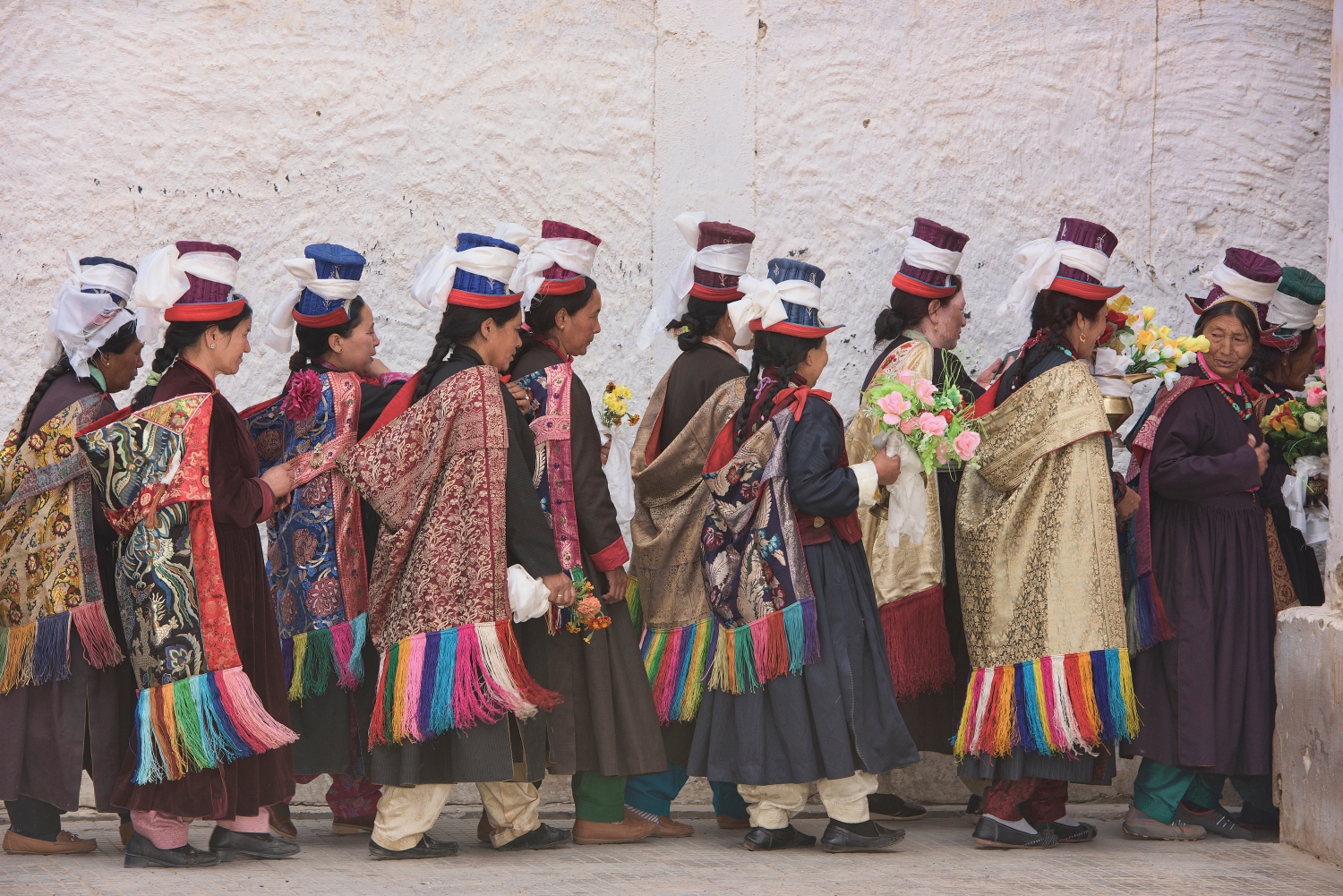
Ladakh, which aptly means “land of high passes”, is part of the Indian state of Jammu and Kashmir. Hiding behind the Himalayas, the mountains block the annual monsoon and leave Ladakh as a high desert, with deep valleys and canyons and even sand dunes and Bactrian camels dotting its surreal desolate landscape. As the region is made up entirely of mountain ranges – the Karakorams, the Ladakh Range and the Zanskar Range being the main ones – it does receive precipitation mostly in the form of snow, and the high elevations ensure frozen winters.
Wherever you go in Ladakh, you continually cross passes. We made our way on foot to the magical lake of Tso Moriri, a deep blue gem surrounded by peaks at 4,522 metres. Getting there required crossing seven 5,000-plus metre passes in seven days, a bitterly cold journey marked by frozen rivers and prayer flags fluttering in the howling winds.
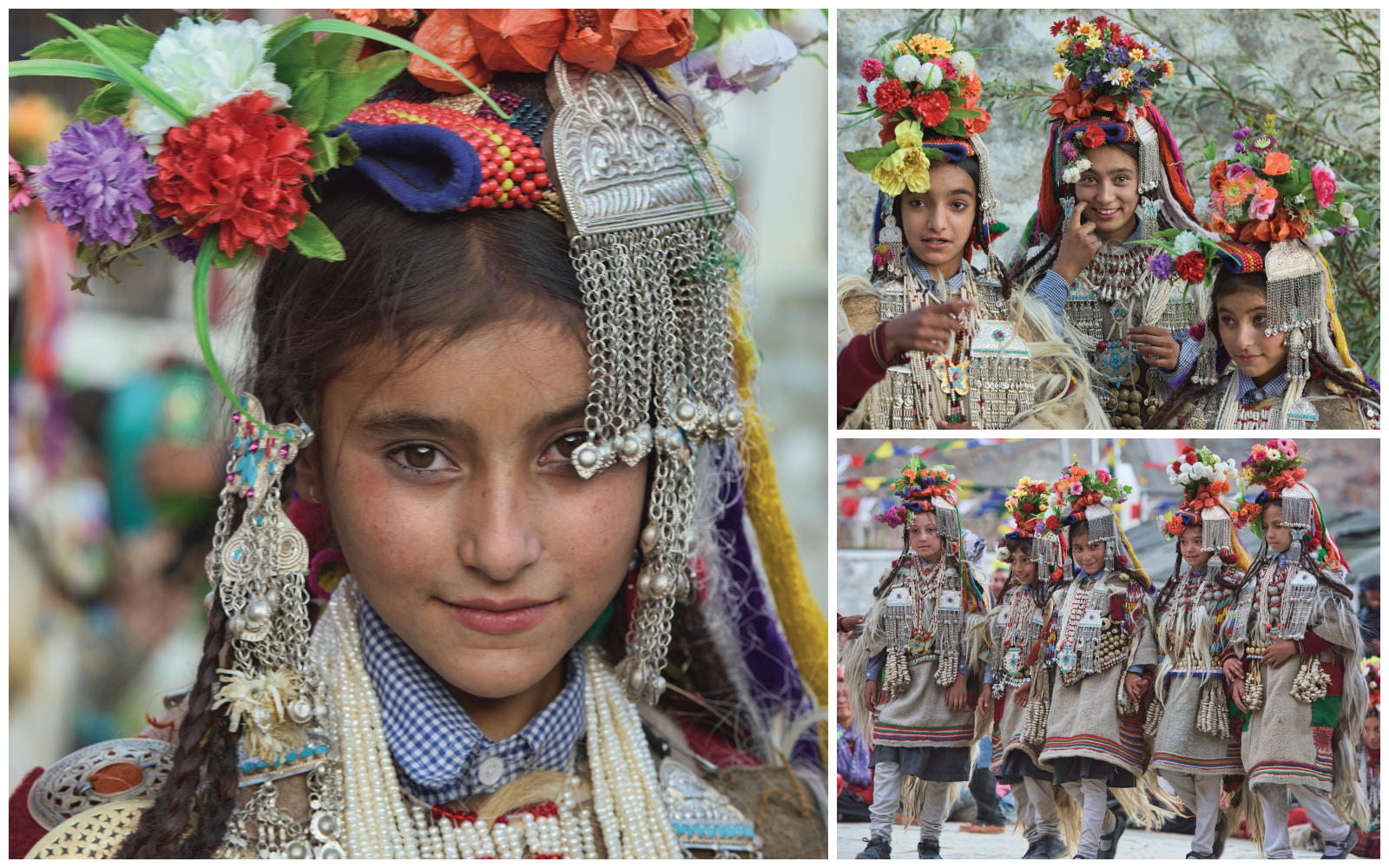
Travelling by jeep might have been easier, but not by much. We journeyed to the other emerald wonder of the kingdom, the elongated Pangong Lake, set right on the Chinese border, which required driving across a 5,360m pass, and then to the Nubra Valley, nestled under the Karakoram Range and just next to Pakistan, which necessitated driving over the Khardung La, at 5,380m considered the second highest motorable road in the world (the first being another road in Ladakh open only to the military). The roads here are so high they dwarf most of the highest mountains the average person will climb in their lifetime.
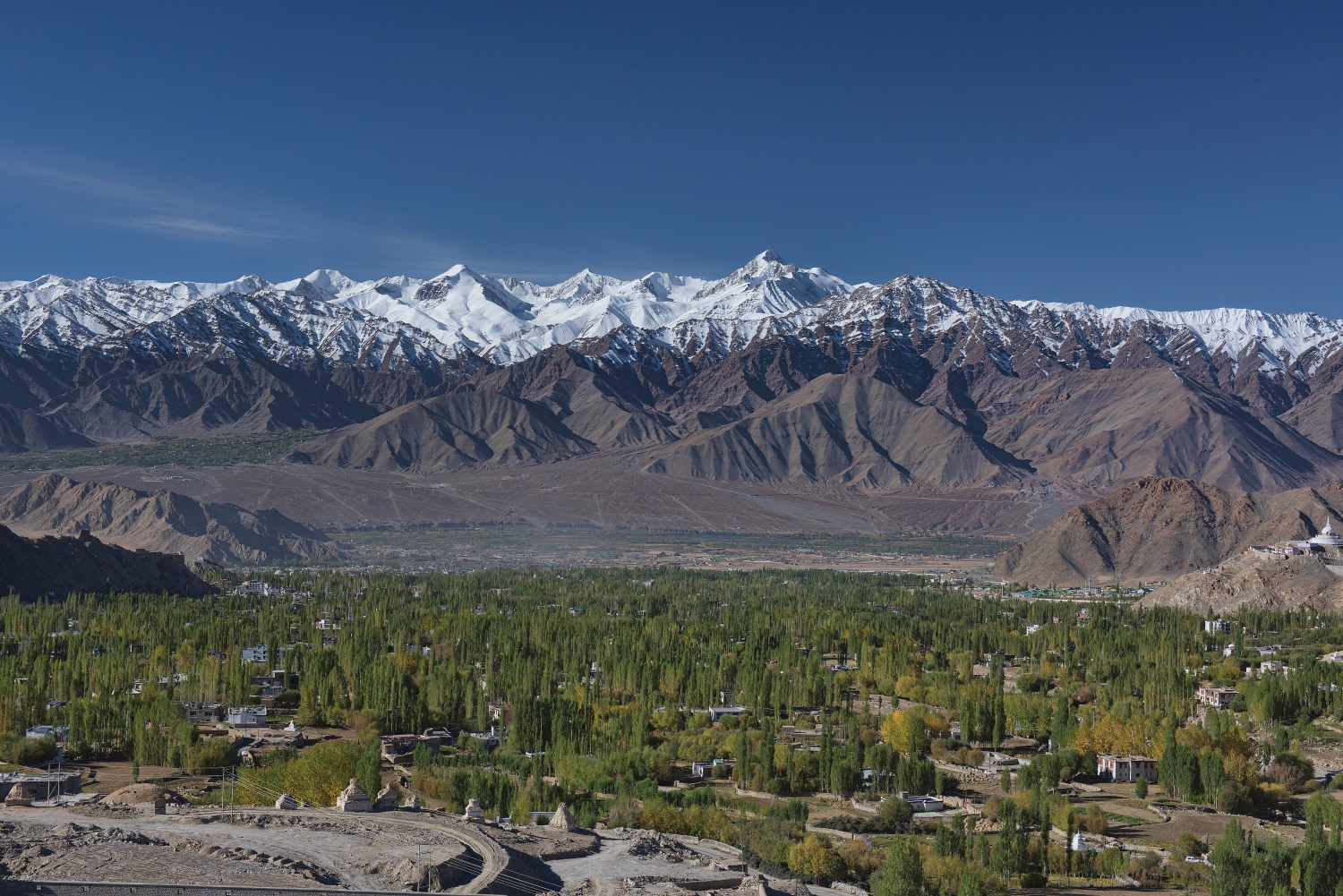
Mountain lovers will rejoice here, with hundreds if not thousands of peaks towering up just about everywhere one looks. Yet much of Ladakh is also about what is underneath them, whether narrow valleys, which lead to yet more high passes, or the plentiful waterways. The mighty Indus River flows through the valley of the same name and is the lifeblood for residents of Leh (Ladakh’s biggest city) and most of the population centres. The Zanskar and Nubra/Shyok rivers do the same for their respective valleys, and while the rivers turn brown during the summer, after the heavy glacial melt from the mountains in the late autumn they begin to change to turquoise and finally to cobalt blue when they freeze during the winter.
The majority of Ladakh is Tibetan Buddhist, and the land is known for its gompas (monasteries), perched high on cliffs and home to chanting monks and mesmerizing festivals with costumed and masked monks dancing to ward off evil spirits. But Ladakh is also home to the last Aryans, a group of people living in a remote valley who are thought to be descendants of Alexander the Great and his men, where green or blue eyes and freckles predominate as opposed to Mongol features, and where women still wear elaborate headdresses and outside marriage is shunned.
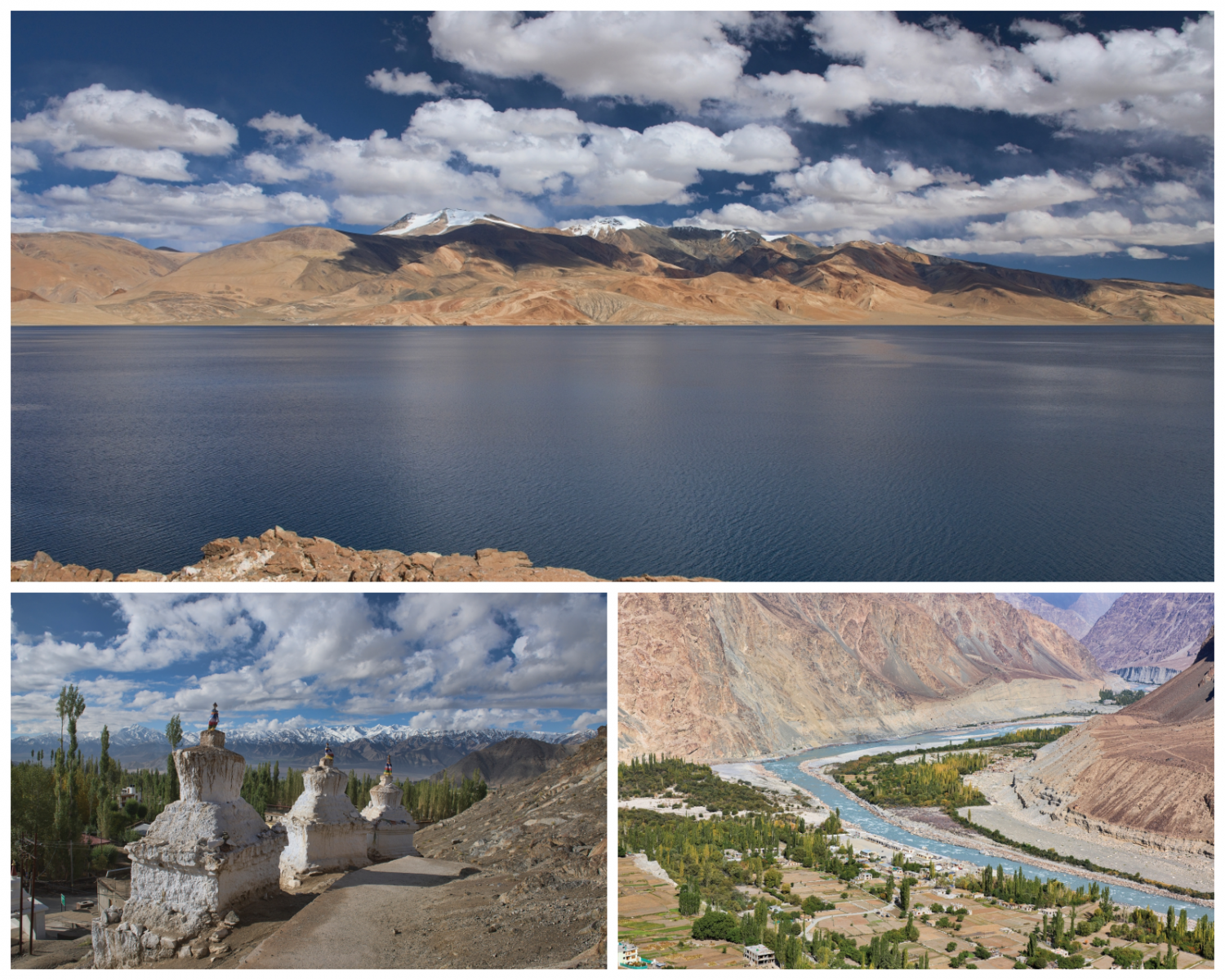
On the Pakistan border one can still see Balti men wearing traditional caps and elaborate irrigation channels built from stone lining the mountainsides. The village of Turtuk at the end of the Nubra Valley was a Baltistan (part of Pakistan) town until the 1971 border war, when India took it over and never gave it back. People here are Sunni Muslim, still wear traditional dress and speak Balti rather than Ladakhi, and the village is prized for its apricots, being the largest provider of the fruit for all of India.
Snow seals off the two roads into Ladakh (one from Kashmir, one from Himachal Pradesh) for more than half the year, yet that has never stopped visitors from coming. In the old days, Ladakh was part of the trade routes running from the Silk Road and China through to Kashmir and Central Asia. These days, intrepid adventurers come to do the Chadar, a chilling trek along the frozen Zanskar River in winter. Similar in landscape and culture to neighbouring in Tibet, it has far fewer restrictions than are imposed on its Chinese neighbour, and remains one of the world’s most stunning physical wonders.
